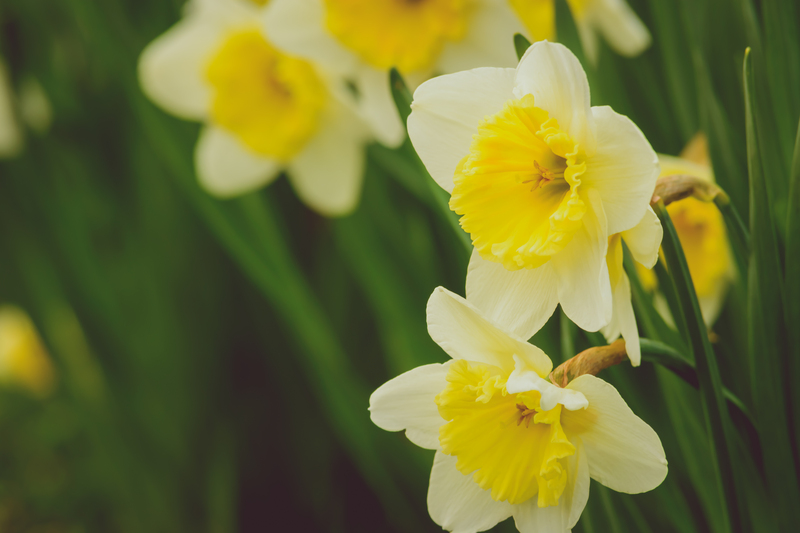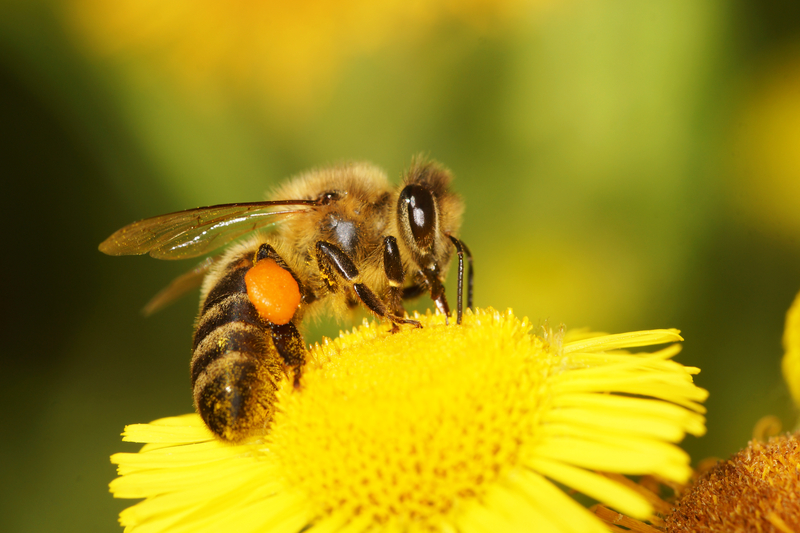Preserve Your Garden Plants Through the Cold Season
Posted on 13/06/2025
How to Preserve Your Garden Plants Through the Cold Season
As temperatures begin to drop and the days get shorter, preserving your garden plants through the cold season becomes a top priority for gardening enthusiasts. Cold weather can wreak havoc on delicate perennials, flowering annuals, shrubs, and even trees. However, with the right preparation and a bit of know-how, you can protect your garden from winter damage. This detailed guide covers everything you need to know to ensure your plants survive the chill and thrive once warmer weather returns.
Why Is Winter Plant Protection Important?
Many plants can suffer from frostbite, dehydration, or root damage if left unprotected during the coldest months. Preserving your garden plants through the cold season isn't just about keeping them alive - it also ensures a flourishing, beautiful garden come spring. Winter protection techniques can help your plants:
- Maintain healthy roots and shoots
- Avoid frost cracks and sunscald
- Conserve moisture and prevent windburn
- Reduce stress, making them more resilient

Understanding Your Plants' Cold Tolerance
Before deciding how to protect your garden in winter, know which of your plants are most vulnerable. Consider:
- Plant species and varieties: Some plants, like roses or tropicals, are less cold-hardy, while others, like native perennials, can withstand freezing temperatures.
- USDA plant hardiness zone: This rating shows how cold your area gets, helping you pick appropriate protective measures.
- Age and health of plants: Young or newly planted specimens need extra care.
- Garden microclimates: Areas exposed to wind, shade, or full sun may need tailor-made protection.
Common Threats to Plants During Winter
The main dangers to plants during the cold season include:
- Frost and Freezing: Rapid drops in temperature can damage plant cells and tissues.
- Wind Burn: Harsh winds can dry out evergreen foliage, leading to brown, brittle leaves.
- Heavy Snow and Ice: Accumulation can break branches or crush delicate stems.
- Winter Sunscald: Intense sunlight, especially on clear days, can cause bark to crack or blister.
- Fluctuating Temperatures: Rapid thaws followed by freezes lead to heaving, where soil expansion exposes roots.
Best Practices for Protecting Garden Plants in Winter
1. Mulching - The Ultimate Winter Blanket
Mulching is one of the most effective ways to insulate plant roots and regulate soil temperature. Apply a generous 2-4 inches of mulch around the root zones of perennials, roses, trees, and shrubs. Suitable mulch materials include:
- Shredded bark or wood chips
- Straw or pine needles
- Compost or well-rotted leaves
2. Cover and Shelter Sensitive Plants
Give your delicate garden plants extra shelter using:
- Frost cloths or garden fleece: Lightweight fabrics trap warmth, allow air exchange, and prevent frost damage.
- Burlap wraps: Ideal for shrubs and small trees, burlap shields from wind and sunscald.
- Cloche or cold frames: Place cloches over individual plants or set up a cold frame for greater protection in one area.
- Old sheets, blankets, or cardboard for emergency overnight coverage if a severe frost is forecast.
3. Watering Wisely Before and During Winter
Hydrated plants are stronger and less likely to suffer winter damage. Before the ground freezes, give your garden a deep drink. Throughout the cold season, water evergreens or new plants on warmer days when the soil isn't frozen. Avoid overwatering, as waterlogged soil can rot roots.
4. Pruning and Cleaning Up the Garden
Remove dead or diseased branches in late autumn, but avoid drastic pruning. Leaving some plant material intact offers extra insulation. Clean up old foliage and fallen fruits to prevent pests and diseases from overwintering.
5. Protecting Container Plants
Pots and planters expose roots to colder temperatures than those in the ground. Preserve your potted garden plants through the cold season by:
- Grouping containers together to reduce heat loss
- Wrapping pots in bubble wrap, burlap, or blankets
- Moving pots indoors or into a sheltered area, such as a shed, garage, or porch
- Raising containers off the ground to promote drainage and prevent freezing
6. Windbreaks and Snow Barriers
Wind can do as much damage as cold. Install temporary screens (using burlap or snow fencing) on the windward side of your garden beds. Small evergreens or roses may benefit from circle-wrapped burlap, while rows of stakes covered with windbreak material can protect larger areas.
7. Anti-Desiccant Sprays for Evergreens
Evergreens lose water through their leaves or needles in winter, which can result in browning known as winter burn. Applying anti-desiccant sprays creates a protective film, reducing moisture loss.
Specialized Tips for Popular Garden Plants
Not all plants require the same level of winter care. Here's how to preserve your garden favorites:
Roses
- Mound soil or compost 12 inches high around the base, then cover with mulch or leaves.
- For grafted roses, ensure the graft union is well-protected from freeze.
- Use rose cones (with ventilation holes) for extreme cold.
Perennial Flower Beds
- Cut back foliage only after it has died back naturally; leaving seed heads provides winter interest and food for birds.
- Add a generous layer of mulch once the ground has chilled.
Vegetable Gardens
- Clear out old crops to deter pests.
- Apply straw or leaf mulch to overwinter root crops like carrots or beets.
- For winter greens, use cold frames or low tunnels to extend the harvest.
Fruit Trees and Shrubs
- Protect young trunks from rodents with tree guards or wire mesh.
- Use white tree wrap to prevent sunscald on thin-barked varieties.
- Mulch around the base but avoid touching the trunk.
Tender Bulbs (Dahlias, Gladiolus, etc.)
- Dig up bulbs before the first freeze and cure them in a dry spot.
- Store in peat moss or sawdust in a cool, dark, frost-free location.
Preserving Your Garden's Biodiversity Through Winter
Preserving your garden plants through the cold season also involves maintaining a healthy ecosystem. Leave some leaf litter or brush piles for overwintering beneficial insects. Avoid using salt near planting beds, as runoff harms plant roots and soil life.
Frequently Asked Questions About Winter Plant Protection
- Q: Should all plants be covered during a freeze?
A: Cover only sensitive, young, or newly planted species. Hardy perennials and established trees often withstand weather fluctuations. - Q: How do I know if my mulch layer is thick enough?
A: 2-4 inches is ideal. Too thick can smother roots, while too thin offers little protection. - Q: Can I use plastic as a plant cover?
A: Avoid direct contact; plastic traps moisture and causes rot. Use breathable materials or allow air gaps. - Q: When should covers be removed in spring?
A: Gradually remove as temperatures warm and the threat of hard frost passes. Remove on warm days to let plants acclimatize.
Spring Recovery: Transitioning Garden Plants Back After Winter
Once winter fades and spring approaches, uncover your plants carefully. Remove mulch that might harbor pests or delay growth, but keep some protection for late frosts. Prune away dead or damaged growth, give your garden a deep watering, and apply balanced fertilizer to help new growth flourish.

Summary: Your Winter Garden Preservation Checklist
- Assess which plants need the most protection
- Mulch beds and base of shrubs generously
- Cover or wrap sensitive or delicate plants
- Water thoroughly before soil freezes
- Prune only when necessary and avoid harsh cutbacks
- Bring in or insulate container plants
- Protect fruit trees and evergreens from rodents and winter burn
- Stay vigilant for warming trends or late cold snaps in early spring
Conclusion: Enjoy a Flourishing Garden Year-Round
Taking the time to preserve your garden plants through the cold season ensures all your hard work pays off with thriving, beautiful plants come spring. By understanding what your garden needs and using the right protection strategies, you'll safeguard your landscape from winter's harshest elements. Whether you're sheltering beloved roses, mulching perennials, or simply moving potted plants indoors, these preparations will help your garden not just survive, but flourish year after year. Start planning now--and look forward to an amazing burst of growth when the warm weather returns!

